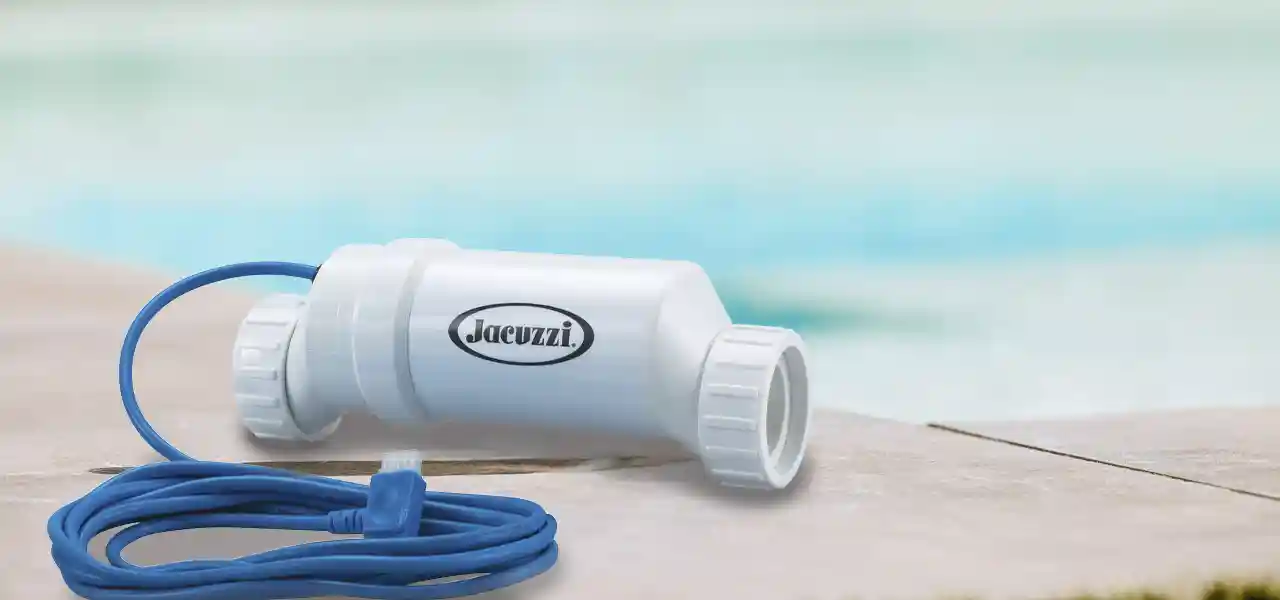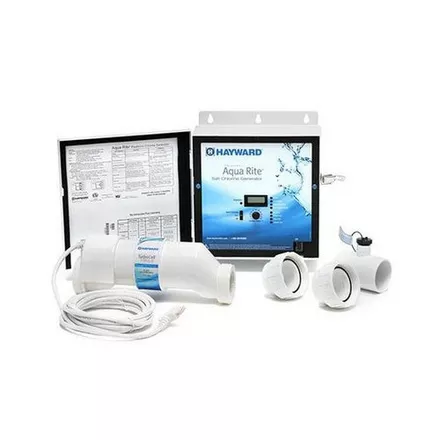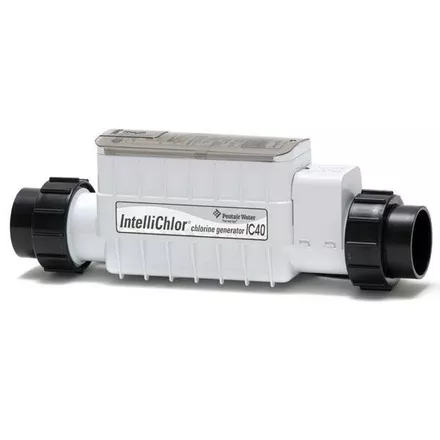The key to keeping a salt chlorinator working efficiently is to give it some regular TLC as part of your pool maintenance regimen. A clean salt cell not only works better, but it also lasts longer than salt cells that haven’t been properly maintained. Cleaning a salt cell may sound complicated, but it’s actually a pretty simple process. In this blog, we’ll walk you through the steps and answer some common questions about maintaining the chlorinator in a salt water pool.
When to Clean the Salt Cell
Beyond pool opening and closing, it’s a good idea to check on your salt chlorine generator once a month during the height of swimming season. The frequency of your cleaning and maintenance schedule will be dependent on pool use, water hardness, pool chemistry and the age of your salt cell. Some newer systems have an automatic indicator to remind you to check on the cell, and they typically light up after around 500 hours of use. Even self-cleaning salt cells still require maintenance, just not as frequently.
Why It’s Important
In time, layers of calcium scale build up across the electrolytic plates inside the generator cell, and the ability of the cell to generate chlorine decreases. As scale accumulates, the salt cell has to work harder (and hotter) to keep up with chlorine production, which can accelerate future scale buildup and reduce the life expectancy of the cell. High calcium hardness and high pH or total alkalinity levels will also cause scale to build up quickly, so be sure you’re keeping the water balance in check.
Checking the Salt Cell
When it’s time to check on the chlorine generator cell, you’ll need to disconnect the cell from the pool lines. First, unplug the chlorine generator and turn off the circuit breaker for the pool pump. Next, slowly unscrew the unions to relieve pressure on the lines, and remove the cell for inspection and/or cleaning. Water will leak out, so try not to get soaked! Once the salt chlorinator cell is off, look through the end of it. If the electrolytic plates inside still look pretty clean and the cell is functioning normally, you can reinstall the unit and check again in another month or two. However, if you notice any whitish or light-colored calcium deposits building up on the plates, you’ll know it’s time to clean the cell.
Cleaning the Salt Cell
To get rid of mild calcium deposits and loose pieces, use a high pressure garden hose at one end to try to flush them out. If that doesn’t work, it’s time to call in reinforcements – this is a job for muriatic acid. This step is best done with the help of a cell cleaning stand, which caps off one end of the cell and holds it vertically for soaking. If you don’t have a cleaning stand, you’ll need to find a way to cap off one end of the cell and prop it upright. Although you technically can just use a bucket to soak the cell, this method is generally not recommended.
The Process
Using rubber gloves and safety goggles for protection, add one quart of muriatic acid to one gallon of water (add acid to water, not water to acid) in a clean plastic bucket. Work in a well ventilated area, and do not inhale the fumes. With the generator cell secured to the cleaning stand, pour the diluted muriatic acid in through the top. Make sure the plates are completely covered, but don’t overfill the cell. You should notice the acid start to bubble, which means it’s working.
Allow the cell to soak for about 15 minutes. As time passes, you will notice that the bubbles coming off the deposits will slow down or come to a stop. When there are no more bubbles, this indicates that the muriatic acid has done its job and you’re almost done. After 15 minutes, pour the acid solution back into the mixing bucket and re-inspect the electrolytic plates. If there are still calcium deposits present after the first soaking, pour the acid back into the cell for another 10-15 minutes or until the bubbling stops, whichever comes first.
Once the cell looks clean, thoroughly rinse it out with water and reconnect it to the pool lines. Plug in the generator cell, return power to the pool pump, and allow the pump to prime. You’re all done!
Final Tips
Muriatic acid is a hazardous chemical and should be handled with extreme care. Always follow label instructions, and use caution when handling near chlorinated water (chlorine and muriatic acid shouldn’t mix). When finished cleaning the salt cell, you can either store the diluted acid for future use or you can safely dispose of it. For disposal procedures, check local regulations. Many cities have designated collection centers for hazardous waste materials. If storing the acid for future cleaning, place it in a clean bottle or other sealable container, and put a label on it to avoid confusion. There are other less caustic chemicals on the market to help with cleaning salt cells, but they may not be as effective.
Use a Saltwater Additive
As a preventative measure against scaling issues in your salt water pool, use a salt water additive in addition to maintaining proper water chemistry. Natural Chemistry offers a product called Salt Water Magic, which is available in a convenient monthly kit. Salt Water Magic is a multi-faceted product, with phosphate removers, enzymes to keep organic material out of the pool, and sequestering agents to keep metals and dissolved solids suspended in the water. This protects pool surfaces from stains and scaling, and it also helps prolong the life of your salt cell.
If you notice your salt chlorinator is not producing as much chlorine as it used to, or you notice blue/green corrosion building up inside the cell, it’s probably time to replace the cell. Salt cells typically last about 3-5 years (or more) when properly cleaned and cared for. That said, there is such a thing as cleaning a cell too much. Too many cleanings with muriatic acid or leaving it to soak in acid for too long can damage the coating on the electrolytic plates. Once that special coating is gone, the cell will not function properly. You can also damage this coating by attempting to scrape off calcium scale with metal tools, such as a flathead screwdriver. Just stick to the basics, don’t let calcium build up too much, and keep your water properly balanced for best results.




